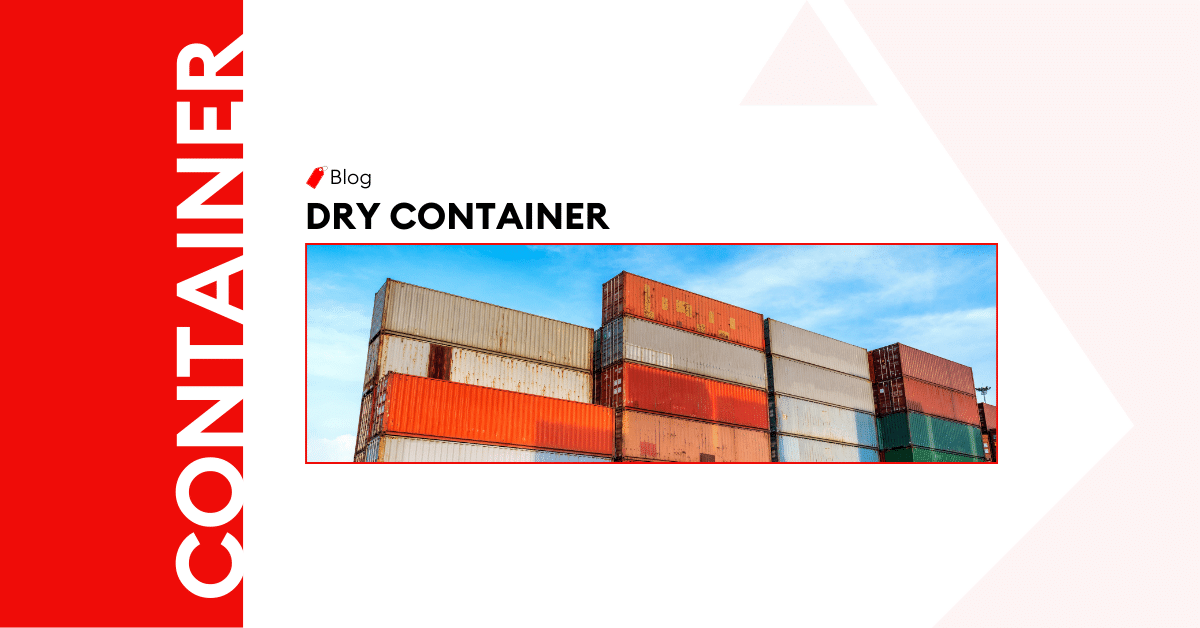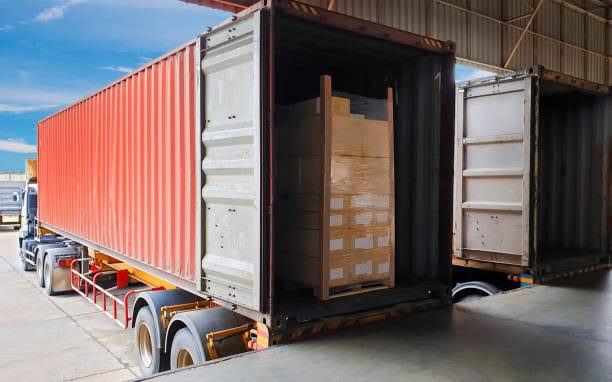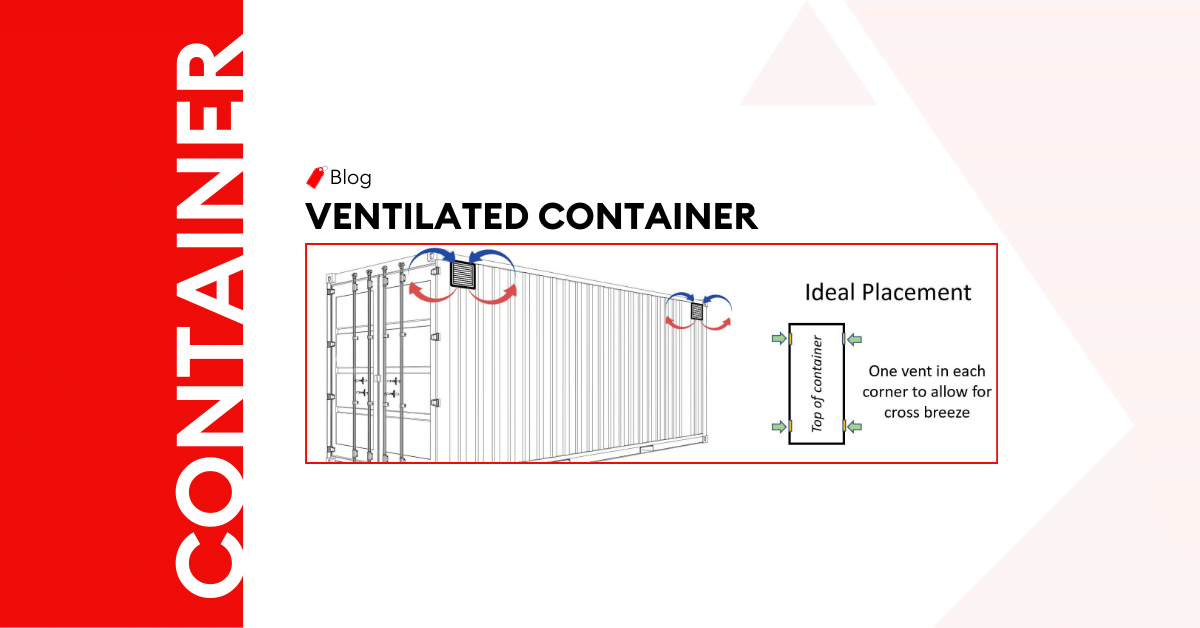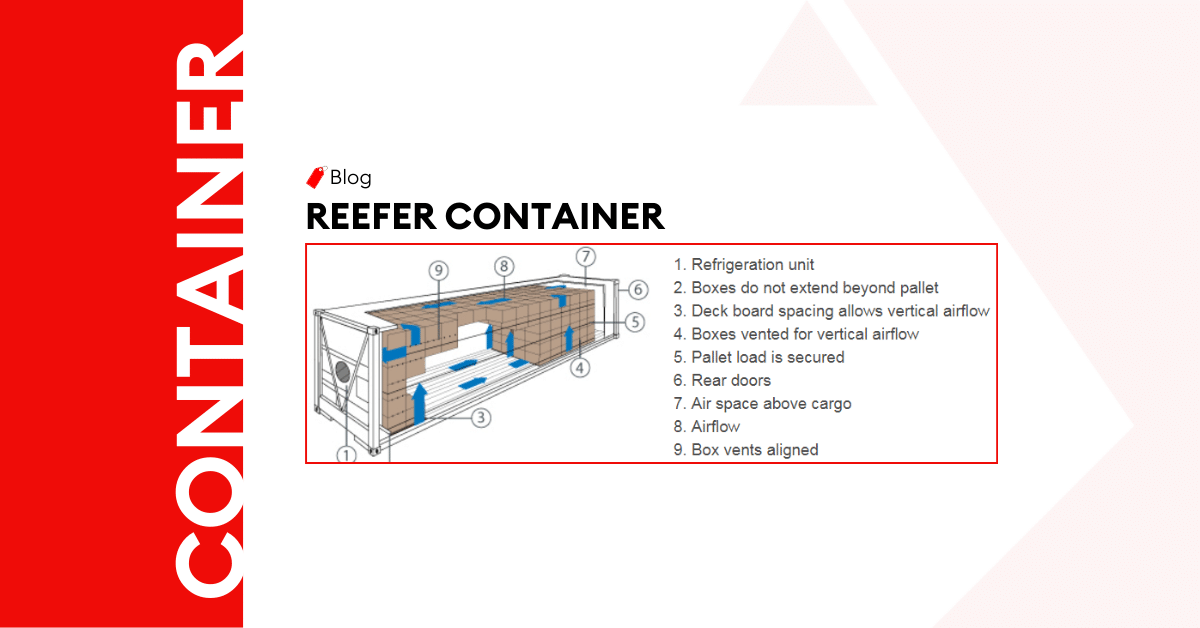
The Ultimate Guide to Dry Container {Types, Dimensions & Specifications}

Introduction
In the vast ocean of international trade, about 90 percent of cargo transport relies on dry shipping containers. As the UAE continues to assert its position as a major player in global trade, comprehending the intricacies of dry containers becomes more crucial than ever. This guide delves into the world of dry-cargo shipping containers, unlocking their versatile and indispensable role in diverse logistics scenarios.
What is Dry Freight Container?
Purpose of Dry Container
Dry, or dry-cargo, containers are standardized, weatherproof metal boxes used to transport various goods across land and sea. Their purpose is to provide a secure, efficient, and cost-effective means of transporting cargo.
Differentiating Dry Containers from Other Types of Containers for Shipping
Unlike specialized containers, dry-cargo containers are versatile and suitable for transporting a wide range of non-perishable goods, from electronics to textiles. They also come in standard sizes, making them compatible with various transportation modes.
Key Features and Components of Dry Container
Some of the main features and components include:
- Robust construction from sturdy, weather-resistant materials
- Strong locking systems
- Forklift pockets and corner castings
- Ventilation units and drainage systems
The Benefits of Using a Dry Container
Here are some of the benefits that comes with the usage of a standard dry container:
Versatility for Various Cargo Types
Dry containers transport goods of various shapes and sizes. Additionally, some containers have ventilation and drainage systems, making them suitable for carrying agricultural products or goods susceptible to humidity.
Standardized Size and Intermodal Compatibility
With uniform dimensions, dry-cargo containers streamline loading and unloading, optimizing cargo handling efficiency. Their intermodal compatibility enables smooth transfer between ships, trucks, trains, and planes.
Enhanced Cargo Protection and Security
In the dynamic world of global trade, transporting perishable goods is pivotal in determining supply chain efficiency. But, gone are the days when traditional shipping methods posed challenges for perishable items; ventilated containers present an innovative solution for the UAE’s logistics landscape.
Let’s see how these containers empower logistics professionals to uphold the integrity of goods during transit.
Weather-Resistant Design
The sturdy steel construction of dry-cargo containers can withstand extreme weather, including heavy rain, high winds, and saltwater exposure during sea voyages.
Cost-Effective Transportation Solution
By design, dry shipping containers eliminate cargo repackaging and enable seamless intermodal transfer, minimizing handling costs. Additionally, their robust construction ensures long-term durability and reduces maintenance expenses.
Efficient Loading and Unloading Process
Dry-cargo shipping containers come in standardized sizes, enabling easy alignment with loading equipment and minimizing setup time. The containers’ intermodal compatibility reduces cargo repackaging and optimizes turnaround times.
Ideal for International Shipping
Dry-cargo containers seamlessly transition between various transportation modes, facilitating smooth cross-border logistics. And, their weather-resistant construction protects goods during long overseas voyages that involve crossing multiple borders.
Contribution to Supply Chain Efficiency
Dry containers provide a secure and weather-resistant environment, safeguarding goods from damage and losses and ensuring they reach their destination in optimal condition. Efficient loading and unloading expedites cargo flow and minimizes delays.
Widely Available and Easy to Find
Due to their standardized design, dry containers are readily accessible to purchase or lease at major ports, transportation hubs, and depots globally.
Customizable Modifications for Special Requirements
Dry shipping containers are adaptable to suit unique transportation needs, such as temperature control or oversized goods. Features like insulation, ventilation, and interior fittings are added to accommodate specific cargo types, ensuring optimal conditions during transit.
Get In Touch
What are the Types of Dry Container?
Overview of Standard Sizes: 20ft and 40ft Dry Container
Standard sizes of dry-cargo shipping containers are the backbone of the logistics industry, and the two most common types of dry containers are the 20-foot and 40-foot containers.
A 20′ dry container is approximately 20 feet long, 8 feet wide, and 8.5 feet high. The 40′ dry container type measures 40 feet in length, 8 feet in width, and 8.5 feet in height.
Dry Container Dimensions, Size and Capacity
Internal Dimensions of a 20-foot Dry Container
Length | Width | Height | Capacity |
Approximately 19 feet 4 inches (5.89 meters)
| Approximately 7 feet 8 inches (2.35 meters) | Approximately 7 feet 9 inches (2.39 meters) | About 1,169 cubic feet (33.1 cubic meters) |
External Dimensions of a 20-foot Dry Container
Length | Width | Height | Tare Weight (Empty Weight) |
20 feet (6.1 meters) | 8 feet (2.44 meters) | 8 feet 6 inches (2.59 meters) | Approximately 2,300 to 2,500 kilograms |
Internal Dimensions of a 40-foot Dry Container
Length | Width | Height | Capacity |
Approximately 39 feet 5 inches (12.03 meters) | Approximately 7 feet 8 inches (2.35 meters) | Approximately 7 feet 9 inches (2.39 meters) | About 2,385 cubic feet (67.5 cubic meters) |
External Dimensions of a 40-foot Dry Container
Length | Width | Height | Tare Weight (Empty Weight) |
40 feet (12.2 meters) | 8 feet (2.44 meters) | 8 feet 6 inches (2.59 meters) | Approximately 3,700 to 4,200 kilograms |
Load Capacity and Weight Restrictions
20-foot Dry Container:
- Maximum Payload Capacity: Approximately 28,000 to 32,000 kilograms (62,000 to 71,000 pounds).
- Tare Weight (Empty Weight): 2,300 to 2,500 kilograms (5,100 to 5,500 pounds).
- Maximum Gross Weight: 30,300 to 34,500 kilograms (67,000 to 76,000 pounds) when fully loaded.
40-foot Dry Container:
- Maximum Payload Capacity: Approximately 26,000 to 30,000 kilograms (57,000 to 66,000 pounds).
- Tare Weight (Empty Weight): 3,700 to 4,200 kilograms (8,200 to 9,300 pounds).
- Maximum Gross Weight: 29,600 to 34,200 kilograms (65,000 to 75,000 pounds) when fully loaded.
Characteristics of Dry Containers
Unique Design Features and Construction of Dry Containers
- Standardized sizes ensure intermodal transport compatibility and ease of handling.
- Weatherproof construction protecting cargo from external elements.
- Secure locking mechanisms.
- Intermodal compatibility with ships, trucks, trains, and planes without repackaging.
- Forklift pockets and corner castings for safe handling during loading and unloading.
- Ventilation units and drainage systems for proper air circulation or moisture protection.
- Efficient stacking ability.
Flooring and Load Securing Mechanisms
The flooring of dry-cargo shipping containers is typically made of marine-grade plywood, providing a sturdy and smooth surface for easy cargo loading and unloading, ensuring even weight distribution and protecting cargo from damage during transit. Additionally, internal tie-down points or lashing rings enable efficient load securing and prevent shifting during transportation.
Structural Strength and Durability
Dry-cargo shipping containers consist of robust, corrosion-resistant steel. So, these containers ensure cargo integrity even in challenging environments and during long travels. Their weather-resistant design protects cargo from external elements, safeguarding it from moisture, wind, and other adverse conditions.
The Most Common Applications of Dry Containers
Overview of Industries and Cargo Types That Utilize Dry Containers
Industries such as manufacturing, automotive, electronics, textiles, and consumer goods use dry containers to ship their products to international markets. Additionally, the agriculture sector relies on dry containers to transport grains, fruits, and other non-perishable products. Pharmaceuticals, machinery, construction materials, and household goods are commonly transported in dry-cargo containers
Examples of Specific Goods Transported Using Dry Containers
- Computers, smartphones, televisions, and other electronic devices
- Textiles, including clothing, fabrics, and fashion accessories
- Industrial machinery and manufacturing equipment
- Household and office furniture
- Lumber, steel, and construction materials
- Consumer goods, such as household appliances, toys, and kitchenware
- Spare parts for cars, motorcycles, and other vehicles
- Plastic containers, bags, and rubber materials
- Books, magazines, and printing paper
How Al Sharqi Can Help with Dry Container Shipping
At Al Sharqi, we take pride in our expert dry container handling, offering secure and efficient transportation for your shipping needs. We treat each shipment uniquely, and our team identifies logistics solutions to meet your specific dry shipping requirements. With Al Sharqi, your cargo is in capable hands, ensuring a smooth and hassle-free shipping experience.
Conclusion
Understanding the versatility of dry storage container is paramount for shipping experts, as it ensures cost-effective, secure, and seamless transportation of goods across borders. Leveraging their intermodal compatibility, structural strength, and tailored logistics solutions will lead to smoother supply chains, reduced transit times, and enhanced cargo protection. Embrace the power of dry containers and new heights of efficiency and success in your business supply chain.
FAQs
Our experience in the field and our global network
Dry containers come in standard sizes: 20ft and 40ft (both 8ft wide, 8ft 6in high). Their uniform dimensions enable easy movement between ships, trucks, and trains without unloading, ensuring efficient intermodal transportation. This standardization streamlines logistics, optimizes space, and enhances security in global trade.
Dry containers are made from durable steel and have the structural strength to withstand harsh weather conditions. Also, their sealed design keeps cargo dry and safe from moisture-related damage.
Dry containers are commonly used to transport electronics, textiles, machinery, consumer goods, furniture, automotive parts, building materials, and plastics. Their versatility stems from a sealed design that safeguards cargo from weather and pests, sturdy construction that withstands handling, and standardized sizes allowing efficient intermodal transport. This adaptability makes dry containers suitable for diverse goods, promoting efficient and secure global trade.
During loading, forklifts move cargo into the containers, ensuring smooth and quick placement. When unloading, the same equipment removes the goods from the containers. Additionally, larger ports and terminals employ cranes and reach stackers to handle multiple containers simultaneously.
Related Articles
The Ultimate Guide to Dry Container {Types, Dimensions & Specifications}
Introduction In the vast ocean of international trade, about 90 percent of cargo transport relies on
What is Ventilated Container – A Complete in Dept Guide
Introduction In the dynamic world of global trade, transporting perishable goods is pivotal in deter
The Complete Guide To Reefer Container – Types, Specifications & Sizes
Introduction Safeguarding the freshness and quality of cold or frozen cargo is a priority in the UAE






Post a comment
You must be logged in to post a comment.